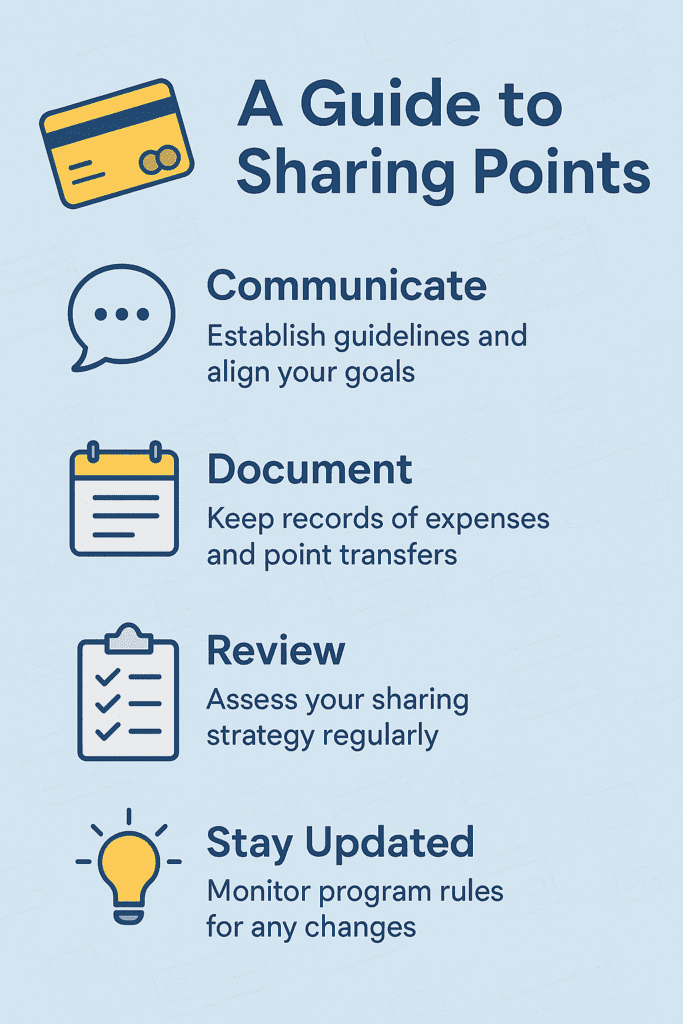The Best Business Credit Card Strategy for Business Partners: How to Share Points and Maximize Rewards
Terms apply to American Express benefits and offers. Enrollment may be required for select American Express benefits and offers. Visit americanexpress.com to learn more.
If you co-own a business with one or more partners, you’re likely managing tens—or even hundreds—of thousands of dollars in monthly expenses. But are you earning the travel rewards you should be from that spending?
In this guide, we’ll break down two powerful credit card strategies that allow business partners to earn and share points strategically: Expense Sharing and Points Sharing. We’ll also show you how to implement these strategies using Chase, Capital One, and American Express business credit cards.
This isn’t just about travel—it’s about unlocking the full value of your business expenses. If you’re new to the world of points and miles and would like a more basic breakdown, check out our full comprehensive guide.
Looking for the best current business credit cards? Check out our Best Offers page.
Table of Contents
Why Business Owners Should Use Points and Miles Cards
Many businesses default to debit cards or cash-back credit cards. While those can serve a purpose, rewards-focused credit cards offer much greater potential value when used correctly. Travel rewards can be redeemed for premium airfare, luxury hotels, and more—often at far more than 1 cent per point in value.
For business partners, maximizing those points requires both strategy and coordination.
Strategy 1: Expense Sharing
Expense sharing involves dividing expenses among multiple credit cards held by each business partner. Typically, each partner takes turns putting expenses on their preferred card until hitting a predefined threshold (e.g., $100,000), then rotates to the next partner.
Pros:
- Individual Rewards Goals: Each partner can pursue personalized goals like earning elite hotel status or companion passes.
- Diversification: Accumulate points in multiple programs (e.g., Southwest, Hyatt, Amex) for more redemption options.
- Status Qualification: Spend counts toward each partner’s own elite status levels.
Cons:
- Complex Setup: Requires frequent updates to auto-pay systems and vendor payment info.
- Heavier Admin Load: Multiple accounts must be linked to accounting systems like QuickBooks.
Best for: Businesses with concentrated vendor payments and manageable monthly bill cycles.
Strategy 2: Points Sharing
Instead of rotating cards, this approach consolidates expenses on one or a few credit cards, and then divides the earned points between partners.
Pros:
- Simplified Accounting: Fewer accounts to manage.
- Fewer Payment Updates: Avoids the administrative hassle of rotating cards.
Cons:
- Shared Strategy Required: All partners must agree on a shared rewards program (e.g., Chase Ultimate Rewards).
- Elite Status Limitation: Only the main cardholder earns spend-based perks.
Best for: Partnerships seeking simplicity and a centralized accounting system.

How to Share Points: Chase vs. Capital One vs. American express
Note: Many of these rules also apply to the personal credit cards from the same issuers
Check out our Best Offers page to see the best personal and business card offers out right now
1. Chase Ink Business Cards
Chase allows you to share Ultimate Rewards (UR) points with one designated business partner on business card accounts.
- Address requirement: All partners must list the same business address.
- One-way transfer only: You can send points to one person; you can receive points from multiple people.
Trickle-Down Sharing Strategy: Partner #1 pools all spending and points, then transfers a proportional share to Partner #2. Partner #2 then transfers a proportional share to Partner #3, and so on.
Setup Tips:
- Initial point-sharing setup must be done via phone.
- Chase reps may not be aware of the policy, so referring to the other person as a “household member” may help.
- Once linked, future transfers can be completed via the app or website
Redemption Tip:
- Partners with an Ink Preferred can transfer points to airlines/hotels directly.
- Partners with an Ink Unlimited or Cash must move points to an Ink Preferred or personal Sapphire Preferred or Reserve card first.
2. Capital One Business Cards
Capital One offers the easiest point-sharing policy:
- No relationship or address matching required.
- You only need the name and card number of the person receiving points.
- Points can be transferred as often as needed.
While online transfers between accounts are limited, phone-based transfers are quick and effective.
3. American Express Business Cards
Amex does not allow pooling Membership Rewards between cardholders.
However:
- If a partner has been an authorized user for 90+ days, you can transfer points from your account to their frequent flyer or hotel loyalty account.
- Requires manual tracking of points usage.
- Avoid speculative transfers to prevent expiration issues.
Choosing the Right Business Card for Shared Points
Here are some strong options for business owners who want to share points effectively:
- Best for Partnerships with Shared Strategy:
- Chase Ink Business Preferred (for maximum flexibility with UR points)
- Best for Maximum Ease of Sharing:
- Best for High Spending and Premium Perks:
- The Business Platinum® Card from American Express (great for high spenders and transferable points, if willing to track manually)
Avoiding Problems: Tips for Sharing Points Smoothly
- Agree on a System: Document whether you’re using expense sharing or point sharing—and who manages what.
- Track Everything: Keep detailed logs of spend, point earnings, and point transfers.
- Review Regularly: Check in every quarter to adjust card usage, monitor rewards balances, and evaluate strategy.
- Know the Terms: Card issuer policies change—review them periodically.
- Consult a CPA: Make sure your rewards strategy doesn’t conflict with your business tax strategy.
Final Word: Why Points Beat Cash Back for Most Business Owners
While cash-back cards offer simplicity, travel rewards are often far more valuable:
- Points used for premium cabin flights or luxury hotels can yield 2–6 cents per point or more.
- Points don’t reduce your business expense deductions the way cash back might.
- Points help offset discretionary personal expenses, like travel, without creating additional tax burdens.
For example, a business that spends $1M annually on a 2X travel rewards card can easily earn 2 million points—enough for multiple international business-class tickets.
Start Here: Your One-Hour Game Plan
If you’re just getting started and feeling overwhelmed, here’s a game plan to make things actionable, and you only need 60 minutes:
- 15 Minutes: Apply for one of these cards: Chase Ink Business Preferred, Capital One Spark Miles, or The Business Platinum® Card from American Express.
- 15 Minutes: Link your card to QuickBooks and set up autopay.
- 30 Minutes: Update your highest-expense vendor accounts to your new card.
You don’t need to perfect the strategy overnight. Start simple, start today—and build your way to first-class travel using your everyday business expenses.
This article is for informational purposes only and should not be considered tax or legal advice. Please consult a qualified CPA for personalized guidance.






